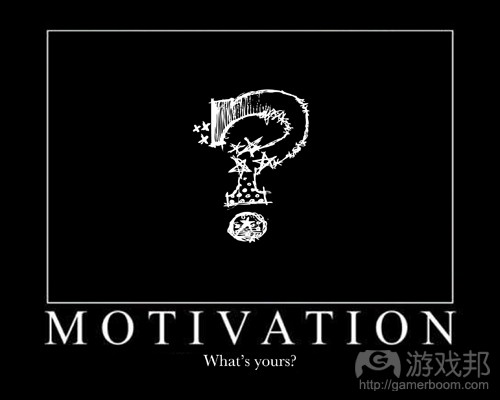探讨制作游戏可以采用的16种动机模式
作者:Gabriel Recchia
自1995年到1998年有关人类行为(游戏邦注:地位、饥饿等)基本动机的一系列调查研究中,Dr.Steven Reiss与其同事从一系列“可能动机”入手,包括心理学研究、精神科分类手册等资源提出的上百种可能性。
接着,他们将这些可能因素缩减到仅剩384条,并通过调查2500多位被测者,衡量各个动机的重要程度。
然后通过因素分析法找到其中的不同基本要素,最终筛选出15个人们认为具有高度重要性的动机(在1998年又补充一条)。具体内容如下:
动机名称 目的 内在感受
权利 渴望影响他人(包括领导权、统治权) 效力
好奇心 渴望了解 好奇
独立性 渴望独立自主 自由
地位 获得社会地位(包括引起关注) 自我重要感
社会联系 获得同伴相陪(共同玩耍) 乐趣
复仇 报仇(包括对抗取胜) 自我证明
荣誉 渴望遵守传统道德准则 忠诚
理想主义 渴望改变社会(包括大公无私) 怜悯
锻炼身体 渴望锻炼肌肉 活力
浪漫 性需求(包括求偶) 欲望
家人 渴望养育孩子 爱
整理 组织需求(包括宗教仪式) 稳定
饮食 食物需求 饱腹感(免受饥饿)
接受 获得认同 自信心
宁静 避免紧张、恐慌 安全、放松
存储 收集、节约需求 拥有权
(此表根据《Multifaceted Nature of Intrinsic Motivation: The Theory of 16 Basic Desires》制定)
上表并不符合将动机分为内外两类这种常用方法,而且从理论角度上看显得更加混乱。但心理学家通过研究指出,我们没有必要期待诸如人类动机这种复杂理论应是整整齐齐,而不是混乱无序。
我们人类拥有50多个不同的皮质区域,100多个不同的神经递质,以及成千上万个蛋白质。为何不把固有动机类别归纳成少数规模?
当然,该理论本身也存在弊端。大量证据显示,人们并没有充分了解刺激因素(从而限制我们的调查研究),而且该理论无法充分证实我们对“想要之物”与“想避免之物”的反应其实是受到了不同神经系统的控制。但它确实提出了一个有趣观点。
不少设计师惊讶于《Farmvile》的盛行,因为其核心机制违背了游戏设计准则,而Zynga的持续式微也表明,优秀游戏应具有强大的内在动机,而不只是提供荣誉和勋章等浅层的外在动机。
然而,《Farmvile》核心机制利用的动机在本质上并不比其它动机“拙劣”,比如收集道具(Reiss理论上的“存储”),以及希望回报赠送Blue Doohickey的玩家一个Green Whatsit(即互利主义,也就是Reiss理论上的“理想”动机),但由于缺少其它刺激性能,这款游戏就难以长期维持这些动机。许多出色的MMO游戏都很擅长充分利用这两种以及其它额外动机。
我在上篇博文中主要强调在游戏中设计内在动机会遇到的困难。尽管我们有必要阐明内外动机设计的差别,但这一理念在现实世界中颇具实施难度,因而对设计师而言多因素理论可能更具实用性。
Jesse Schell在《The Art of Game Design》一书中将它们当作“透镜”,该书包括100个发人深省的透镜,设计师可以借此观察和改进游戏。可能会有人设想开发出对应Reiss基本动机的透镜(游戏邦注:比如,独立透镜:我的游戏会让玩家获得独立感吗?玩家会获得控制感吗?他们能够自由选择有意义的选项吗?)事实上,Schell的列表中已囊括不少与上述动机相关的透镜(比如竞争透镜、合作透镜、需要透镜、控制透镜、社区透镜)。
虽然大多数设计师已经知晓刺激用户的因素,但着眼于这16个尤为重要的维度还是具有一定价值,即便他们只是利用这些动机鉴别游戏的出彩之处,以及它的改进方向。
除了传统观点所提出的会刺激玩家的性能(奖励技能提升、引人注目的故事、逐渐加大的困难等)之外,“16种基本渴望”理论也可以激发人们进一步思考其他有待发掘的刺激性能。(本文为游戏邦gamerboom.com编译,拒绝任何不保留版权的转载,如需转载请联系:游戏邦)
Sixteen ways to motivate – is your game tapping into them?
by Gabriel Recchia
The following blog was, unless otherwise noted, independently written by a member of Gamasutra’s game development community. The thoughts and opinions expressed here are not necessarily those of Gamasutra or its parent company.
7 Habits of Highly Effective People. The 8 Essential Steps to Conflict Resolution. I’ll be the first to agree that including an arbitrary number in a headline makes an article sound like something that you’d find in the bargain bin of your local bookstore, but in this case there’s a rationale.
In a series of studies from 1995 to 1998 that investigated fundamental human drives/motives for action (status, hunger, sex, etc.), Dr. Steven Reiss and colleagues started with a list of “every motive they could imagine,” including hundreds of possibilities drawn from psychological studies, psychiatric classification manuals, and other sources.
They whittled this down to a mere 384, and distributed a survey designed to measure the importance that survey-takers assigned to each motive to over 2,500 people.
Plugging the results into a factor analysis to find out how many distinct underlying dimensions were necessary to account for the majority of variance yielded 15 distinct clusters of motives that people rated as of particularly high importance. (They added one more in 1998). In no particular order, they are:
Based on Multifaceted Nature of Intrinsic Motivation: The Theory of 16 Basic Desires, Table 1.
This is at odds with the reigning approach of dividing motivations up into extrinsic vs. intrinsic, and is much messier from a theoretical perspective. But as the psychologists who conducted the studies argue, there’s no reason to expect that an adequate theory of something as complex as human motivation should be anything but messy.
We have over 50 distinct cortical regions, over 100 different neurotransmitters, and thousands of proteins. Why not at least a handful of innate motivational categories?
Certainly, the theory has its flaws. There is ample evidence that people don’t have a good grasp of what really motivates them (which puts limits on what we can learn from surveys), and the theory doesn’t do justice to fact that our reactions to “things we want” vs. “things we want to avoid” are subserved by different neural systems. But it certainly provides an interesting perspective.
Many designers were astounded at the popularity of Farmville, whose key mechanics flew in the face of received game design wisdom, and Zynga’s continuing demise has been heralded by some as proof that the intrinsic motivation provided by a good game ultimately trumps the extrinsic motivation of praise and badges. Maybe so.
But it’s also possible that the motives that Farmville’s core mechanics tap into—accumulating items (Reiss’ “saving” motive) and the desire to give a Green Whatsit to someone who gave you a Blue Doohickey (reciprocal altruism, which falls under Reiss’ “idealism” motive)—are not inherently ‘worse’ than other motives, just hard to sustain in the long term in the absence of other motivating features. Arguably, many good MMOs take ample advantage of both of these motives and many more besides.
My previous post highlighted some of the difficulties of designing intrinsic motivators into a game. Even if the intrinsic/extrinsic distinction is a meaningful and important one to make, the difficulties of navigating this space in a real-world game may make multi-factor theories more useful to game designers in practical terms.
In particular, they can be used as “lenses” in the sense of Jesse Schell in The Art of Game Design, which contains 100 thought-provoking lenses through which one’s game can be viewed and improved. One can imagine developing corresponding lenses for each of Reiss’ fundamental motives (e.g. “The Lens of Independence: Does my game make people feel autonomous? Do players have a sense of control over their actions? Do they feel free to select from meaningful choices?”)—and in fact, Schell’s list already includes several that are relevant to some of the motives above (The Lens of Competition, The Lens of Cooperation, The Lens of Needs, The Lens of Control, The Lens of Community).
(Drawing up lens cards for Reiss’ remaining motives, and designing a game that satisfies the motives of “desire to eat,” “desire for sex,” and “desire to raise own children” is left as an exercise to the reader.)
Although most designers already have a sense of what motivates their audience, focusing one’s attention on the sixteen dimensions that have emerged as particularly important in large-scale studies of human motivation may be a worthy endeavor, if for no other reason than to identify which motives one’s game already addresses best, and to evaluate whether ramping those up even more would improve it further.
In addition to features that conventional wisdom suggests are motivating to players (rewards for skill development, compelling narrative, gradually increasing difficulty, etc.), ’16 Basic Desires’ theory may inspire further ideas for underappreciated features worthy of consideration.(source:gamasutra)








































 闽公网安备35020302001549号
闽公网安备35020302001549号